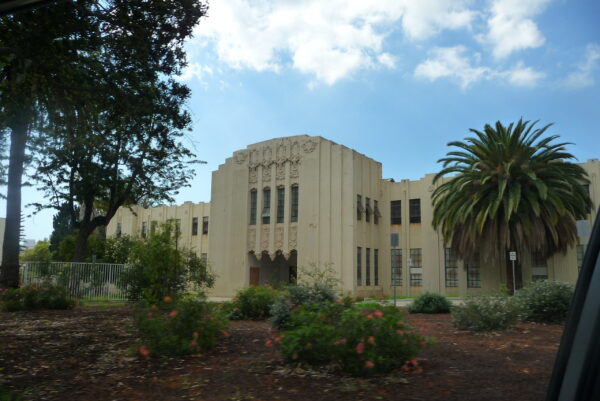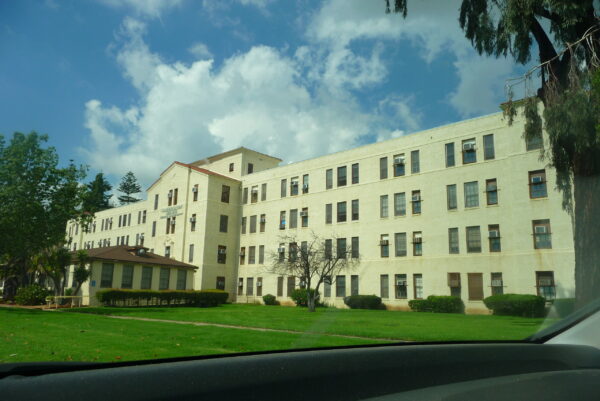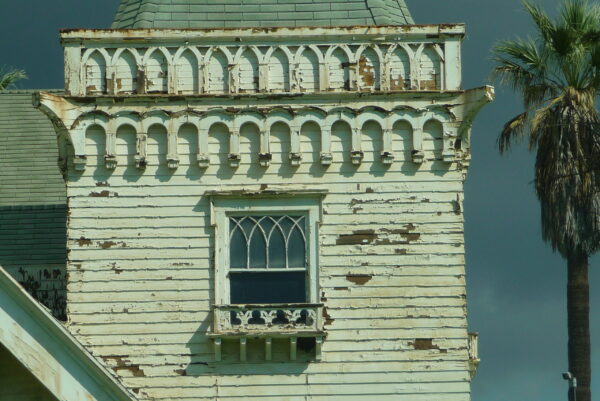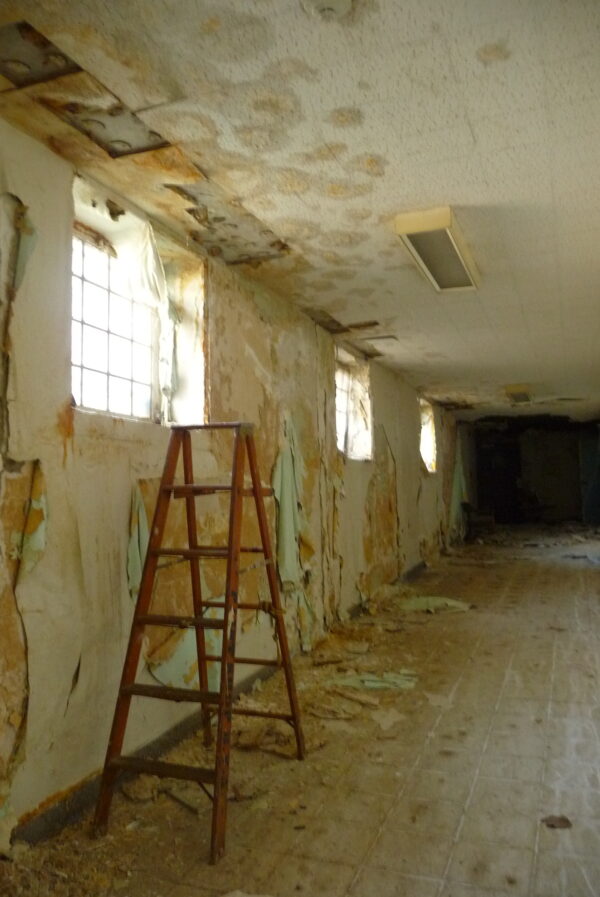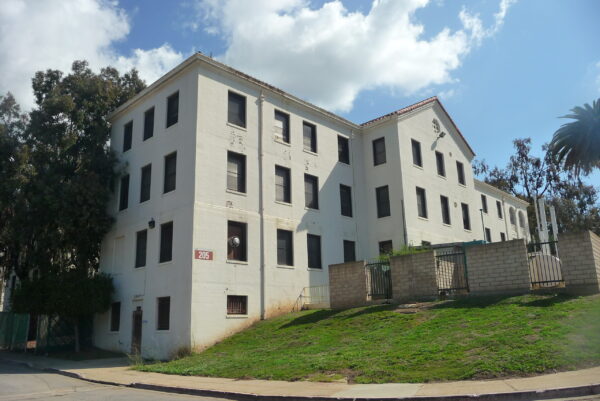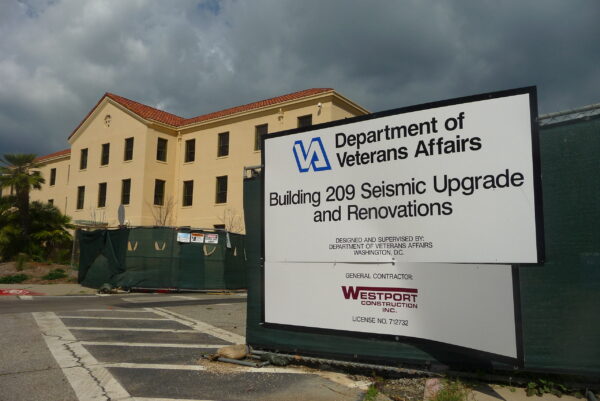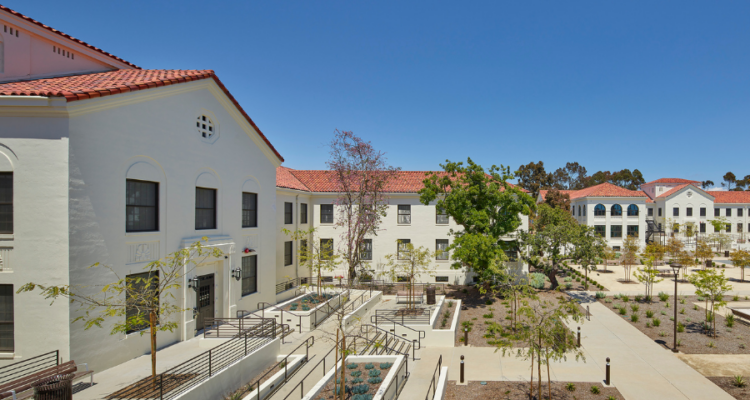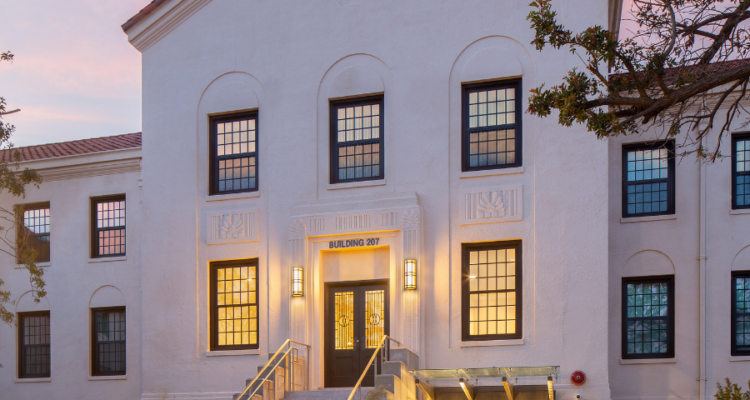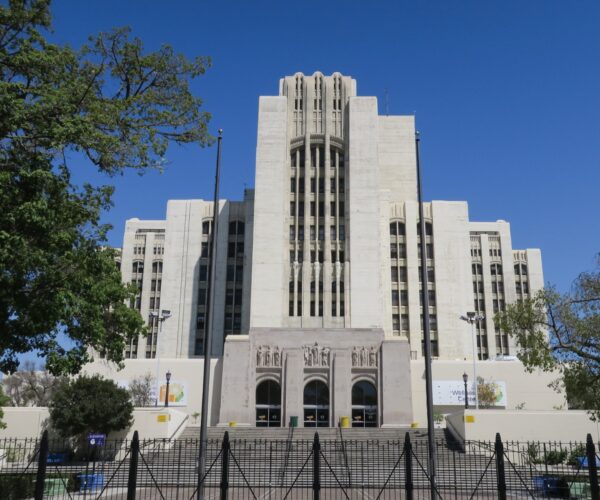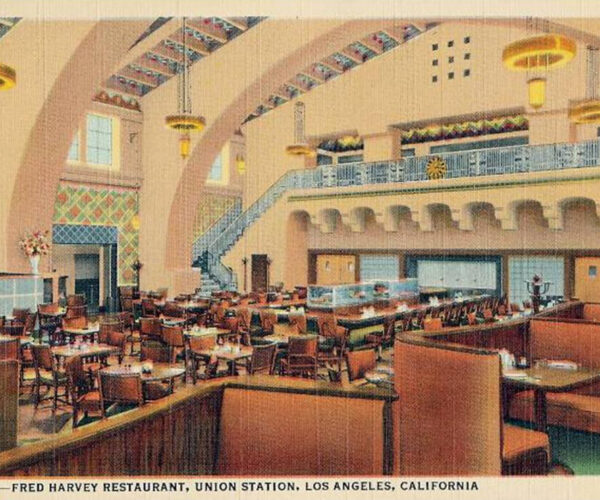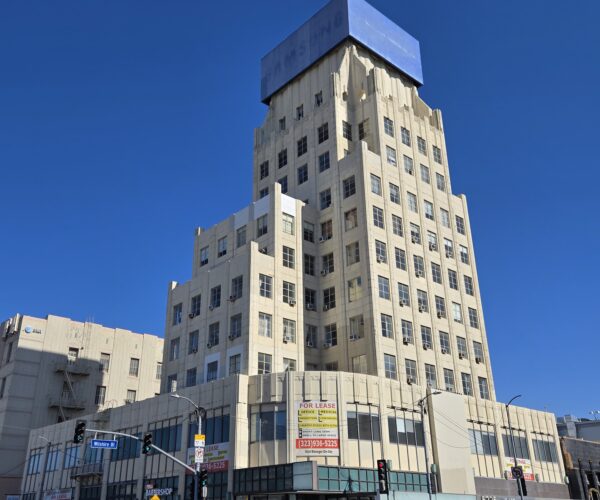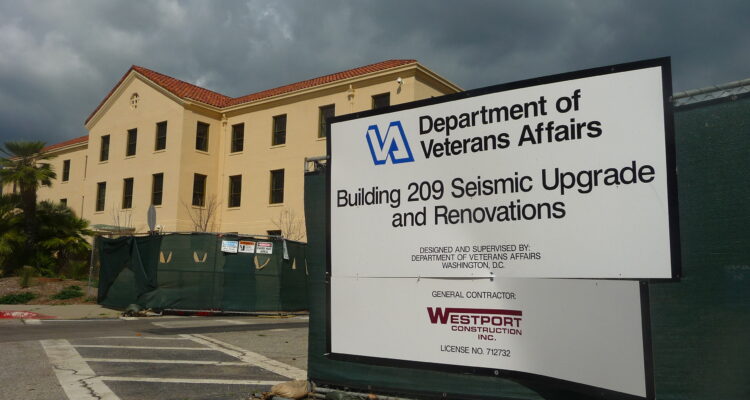
Place
Veterans Affairs West L.A. Healthcare Center
Founded in 1888, the West Los Angeles VA Campus honors four generations of Veterans of the United States Armed Forces.
Active
The Department of Veterans Affairs has developed an ambitious Master Plan for its West Los Angeles campus, allowing for additional adaptive reuse and prompting some concerns for future growth.


Place Details
Address
Get directions
Year
Property Type
Government Officials
Attributes
Community
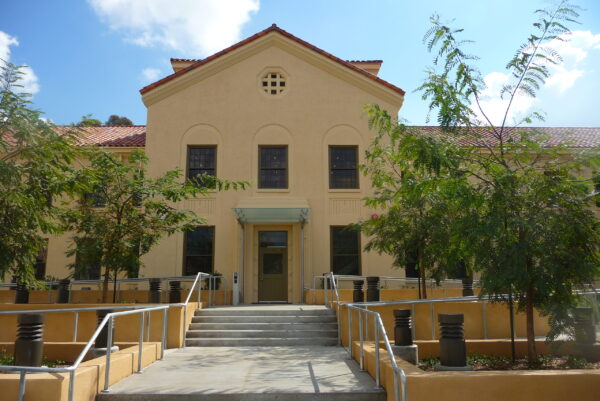
Building 209 | Adrian Scott Fine/L.A. Conservancy
Overview
In continuous operation since 1888, the West Los Angeles Veterans Affairs (VA) Campus spans 400 acres and is home to a rich collection of historic resources, including the National Register-listed West Los Angeles VA Historic District and the individually listed Streetcar Depot and Wadsworth Chapel.
Through its multi-year effort to develop a new master plan for its 400-acre West Los Angeles Campus, the United States Department of Veterans Affairs (VA) has pursued a number of adaptive reuse projects. The plan helped the VA establish and pursue the most effective uses of the campus for the veteran community, prioritizing care for underserved veterans who are unhoused, aging, and/or disabled. The Conservancy advocated for the campus’s historic resources throughout the environmental review process.
In late 2020, the Department of Veterans Affairs (VA) released its new 2022 Draft Master Plan. The new plan proposes a mix of adaptive reuse and sensitive infill construction. However, the Plan also calls for the demolition of a number of historic buildings that are contributors to the National Register Historic District
About This Place
About This Place
This rich collection of historic places includes the Wadsworth Chapel, the oldest remaining building on Wilshire, and the Wadsworth Theatre. The campus is also defined by open spaces, landscaping, and system of roadways anchored by Wilshire Boulevard.
In January 2015, the VA announced that it would reinvest in its long-neglected West Los Angeles campus as part of a settlement with a local group of disabled veterans and the American Civil Liberties Union. In recent decades, the center had strayed from its original purpose of caring for and housing veterans as a result of lease agreements with private companies and organizations. A number of buildings, including the Wadsworth Chapel, are currently vacant and have deteriorated significantly.
In 2015, the VA completed a pilot rehabilitation and adaptive reuse of the Homeless Veterans Transitional Housing building, formerly known as Building 209. The project is a strong model for the rehabilitation and adaptive reuse of other historic buildings on the West L.A. campus, earning it a 2016 Conservancy Preservation Award.
The original land and funding for the West Los Angeles campus came from a number of influential sources in the West, including U.S. Senator John P. Jones (Nevada), Robert Baker, and Arcadia Bandini Stearns de Baker. They believed that the development of a community of veterans would contribute to the economic growth of the surrounding area.
Known as the Pacific Branch of the National Home of Disabled Volunteer Soldiers, the campus evolved throughout the late nineteenth and early twentieth centuries. Architect Stanford White was credited with designing the original Shingle style wood frame barracks, which influenced J. Lee Burton’s designs for the Streetcar Depot (1890) and Wadsworth Chapel (1900).
Following the end of World War I, the medical facilities expanded significantly, and many of the Colonial Revival buildings were constructed during this period. A subsequent wave of development occurred after the establishment of the Veterans Administration in 1930; this building campaign was characterized by the proliferation of the Mission and Spanish Colonial Revival styles. Notable examples from this era are the Wadsworth Theatre (1940) and Building 209 (1945), now known as the Homeless Veterans Transitional Housing.
The non-profit organization 1887 Fund was established to advocate for the restoration of the VA campus’s historic structures and landscapes.
The Wadsworth Chapel is a late-Victorian building erected before the boulevard even existed in this part of Los Angeles. It is the last remaining example of a neighborhood of Victorian structures officially named the National Home for Disabled Volunteer Soldiers, founded in 1887 to care for volunteer soldiers of the Civil War and Indian wars. It was designed to serve Protestants on one side and Catholics on the other.
Its detailing, window patterns, bell tower, and to some extent, interiors, remain intact. Yet it needs millions of dollars in repair and restoration and is currently closed to the public.
The Wadsworth Theatre was originally referred to as the Facility or Veterans’ Theater. The architect is unknown, although a number of buildings were built in this style on the Veterans Administration grounds before World War II. The Wadsworth held nearly 2,000 patrons and was used for seasonal pageants, theatre productions, and movies for the VA residents. The theatre underwent extensive renovation between 1999 and 2002. It has since been used for theatre, concerts, symposia, movies, awards ceremonies, and other events.
Our Position
The Conservancy appreciates the VA’s pursuit of a holistic master plan with a strong historic preservation component and submitted comments on the draft master plan in December 2015. The plan proposes to revitalize the campus while retaining its historic resources and enhancing its existing neighborhood character, which would create new opportunities for serving the veteran community.
During the environmental review process, we raised several questions and concerns over the potential impacts to historic resources, including the current environmental review process. We recommended the preparation of a detailed historic preservation plan to guide the rehabilitation and reuse of historic buildings and the establishment of clear design standards for new construction.
We also pressed for the immediate stabilization of the Wadsworth Chapel, which has rapidly deteriorated for a number of years.
